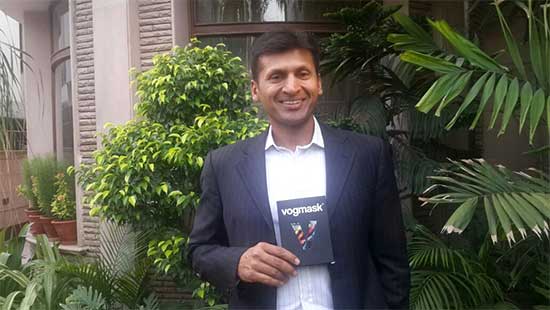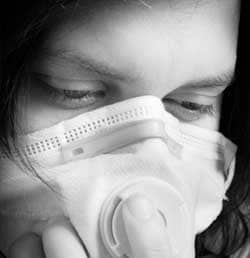The Deceiving Rain
Delhi’s heat wave conditions had had a brief respite that morning with unexpected showers. The Gulmohar and Laburnum tress looked freshly washed as they lined the roads of this plush south Delhi colony. The parks were green, the sky a lovely blue and the air felt crisp.
We were on our way to meet entrepreneur Jaidhar Gupta. The 45-year-old ventured into the space of protection from air pollution two years after he developed respiratory issues himself. After experimenting with a few items, he found a mask that made his respiratory discomfort go away.
So he recently introduced Vogmask in India, a high efficiency mask made in the USA with award winning filtering textile that provides protection from PM 2.5 particles (tiny air pollutant particles), dust, germs, pollen and other airborne contaminants. The perfect accessory if you live in the national capital, ranked as one of the most polluted cities on the world.
The masks have been a big hit with the diplomatic circles in the capital for the past year and now more and more orders are pouring in from local residents.
But it was difficult the sense the urgency for such a product on a day like this. The rain not only brings the temperature down but also reduces the pollution level as dust particles are soluble in rain. So the monsoon is probably the best time of the year in terms of air quality.
However, the reality was far from what the facts represented. The permissible PM 2.5 level according to WHO guidelines is 10 micrograms per cubic metre, however the Indian National Air quality standard puts the permissible level for PM 2.5 at 40 micrograms per cubic metre.
Jaidhar switched on his imported home air quality monitor for us to see the level of air pollution we were breathing at the time. As the monitor flashed the reading, there was silence and shock. The PM 2.5 reading was 160 micrograms per cubic metre.
Yes, the air we are breathing every second is 150 times over the WHO permissible limit.
“All of us living in urban India, in some sense have got immune to our environment and when you look at something every day, you don’t see how it is changing everyday but the deterioration has happened over time,” says Jaidhar.
He elaborated that most of us don’t monitor the air quality in our homes and can almost never believe that the room we sit in is as polluted as the air outside.
The first realization needs to be is that what is outdoors is most certainly indoors. Added to this other things in our homes also emit pollutants we know nothing about: the toaster, the cleaning products, the carpet, even cologne and perfumes.
Jaidhar shares a personal story: “A personal story that broke my heart is that one day I wanted to take the children to India Gate for ice cream like we did when we were children. Once we got there the children wanted to roll down the window, they wanted to go and run outside but all we could do was open the window for a fraction of a second to get the ice-cream and give the money. I thought about it all evening after coming back. If this is the environment we are living in we have really pushed this over the edge and it’s time to do something about it.”
He now monitors his air quality indoors regularly, uses specific plants and purifiers that improve air quality, limits the use of products that emit air pollutants, drives an electric car and wears a mask whenever outdoors.
Just like Jaidhar, each one of us need to take ownership of our role in creating this situation outside and inside our homes and take a step forward to make the little changes. Changes to breath in cleaner air and to live in a cleaner city.
Read more:
Indoor Pollution: The Silent Killer
10 Remedies to Tackle Indoor Pollution
5 Things Government Needs to do to Improve Air Quality




